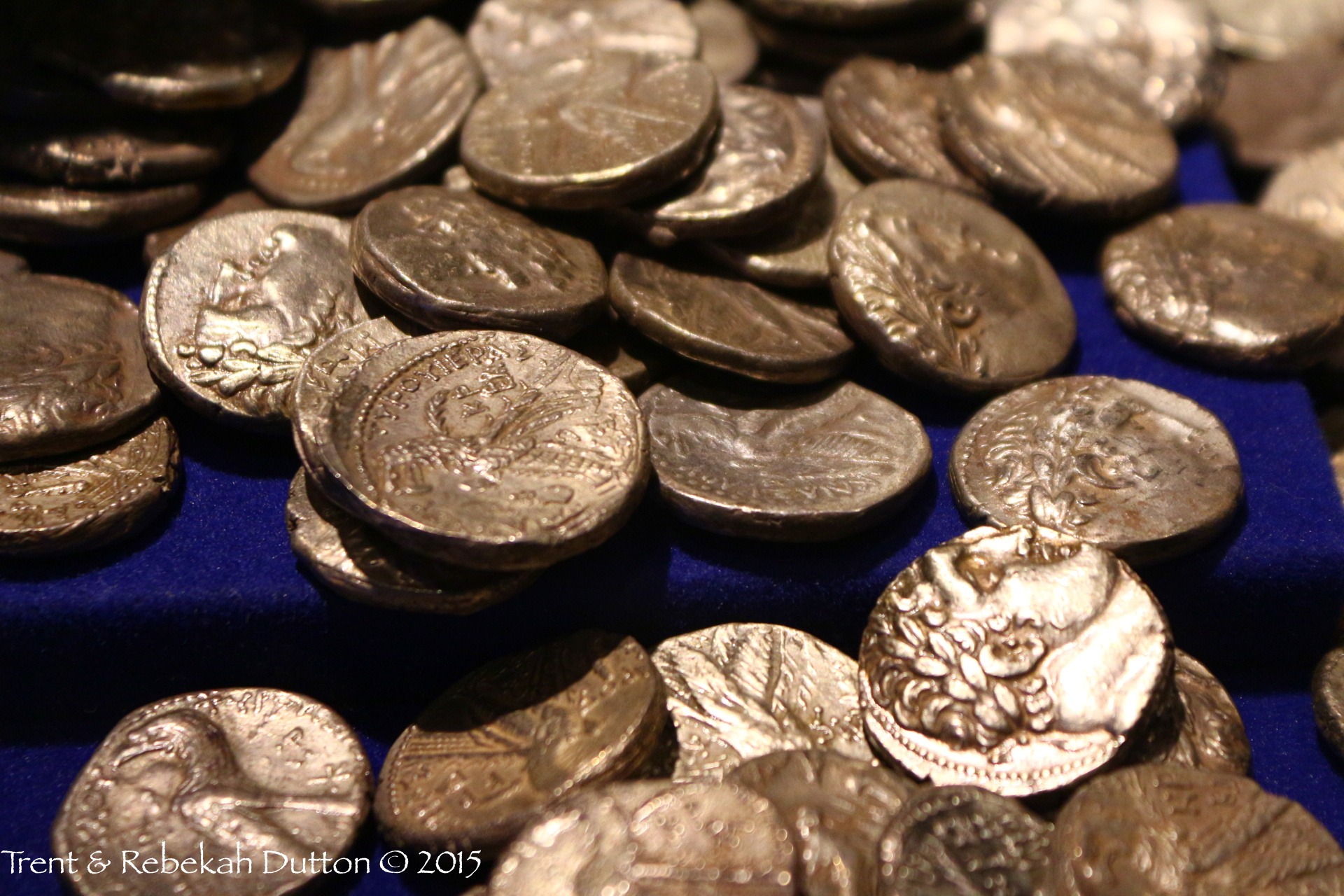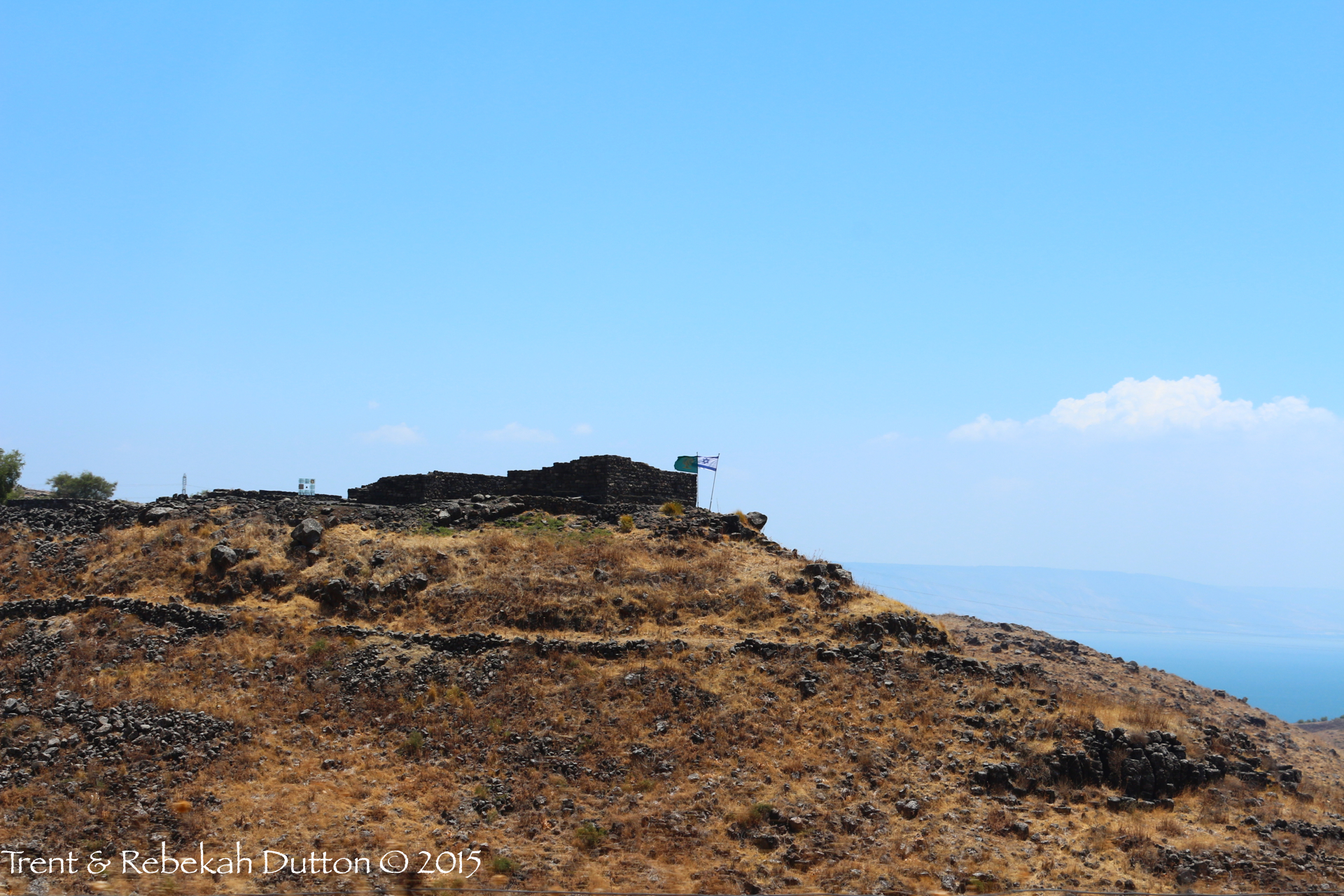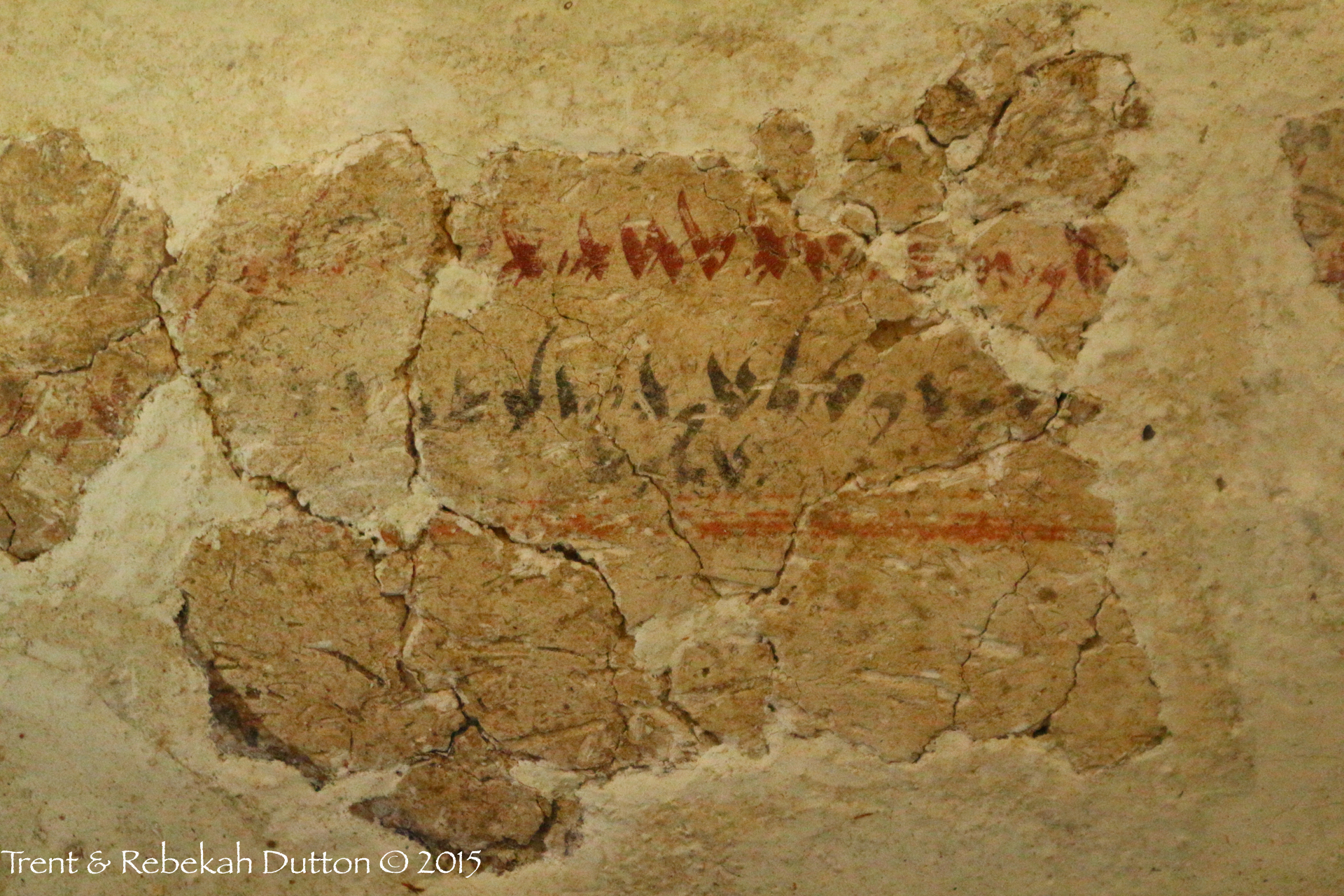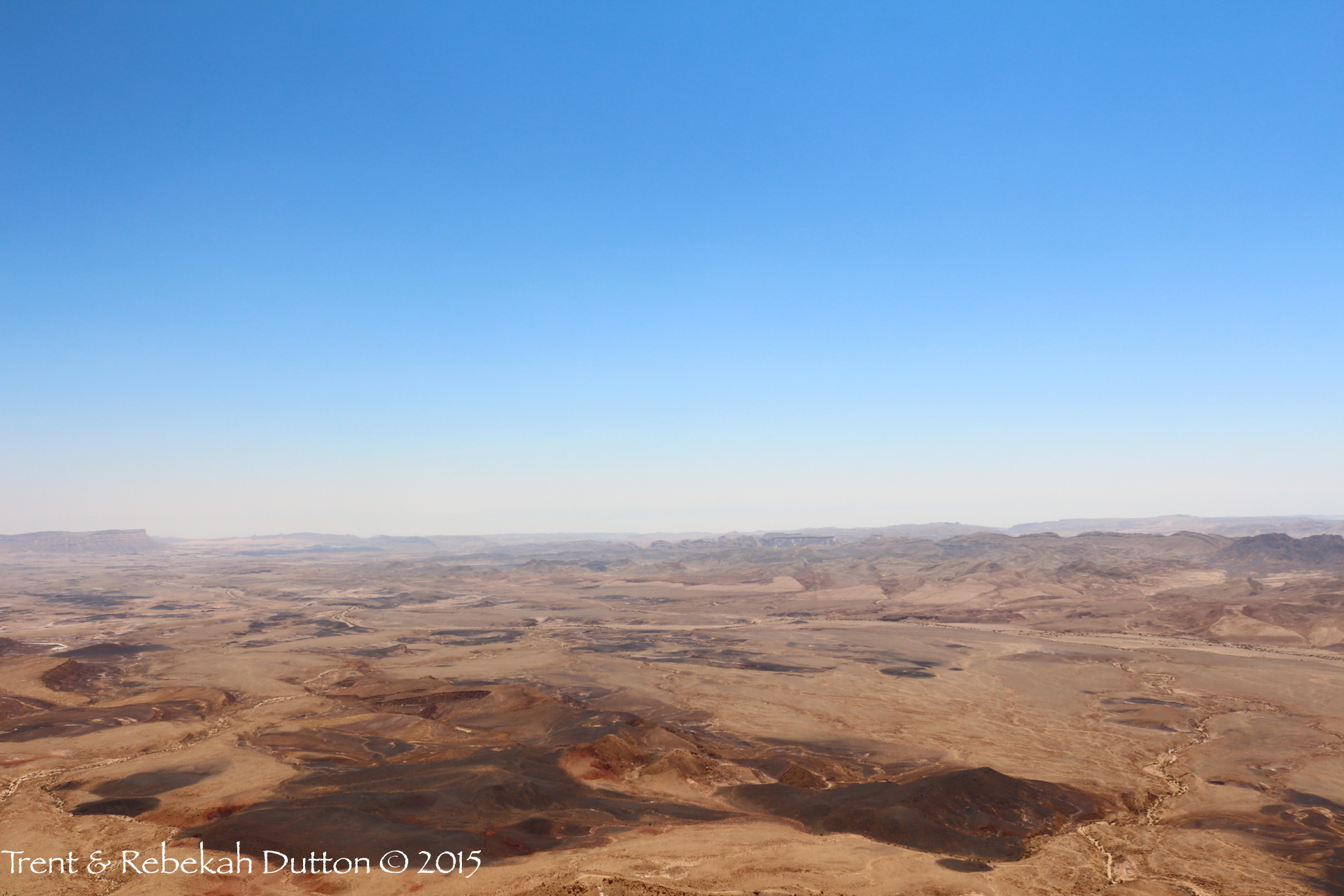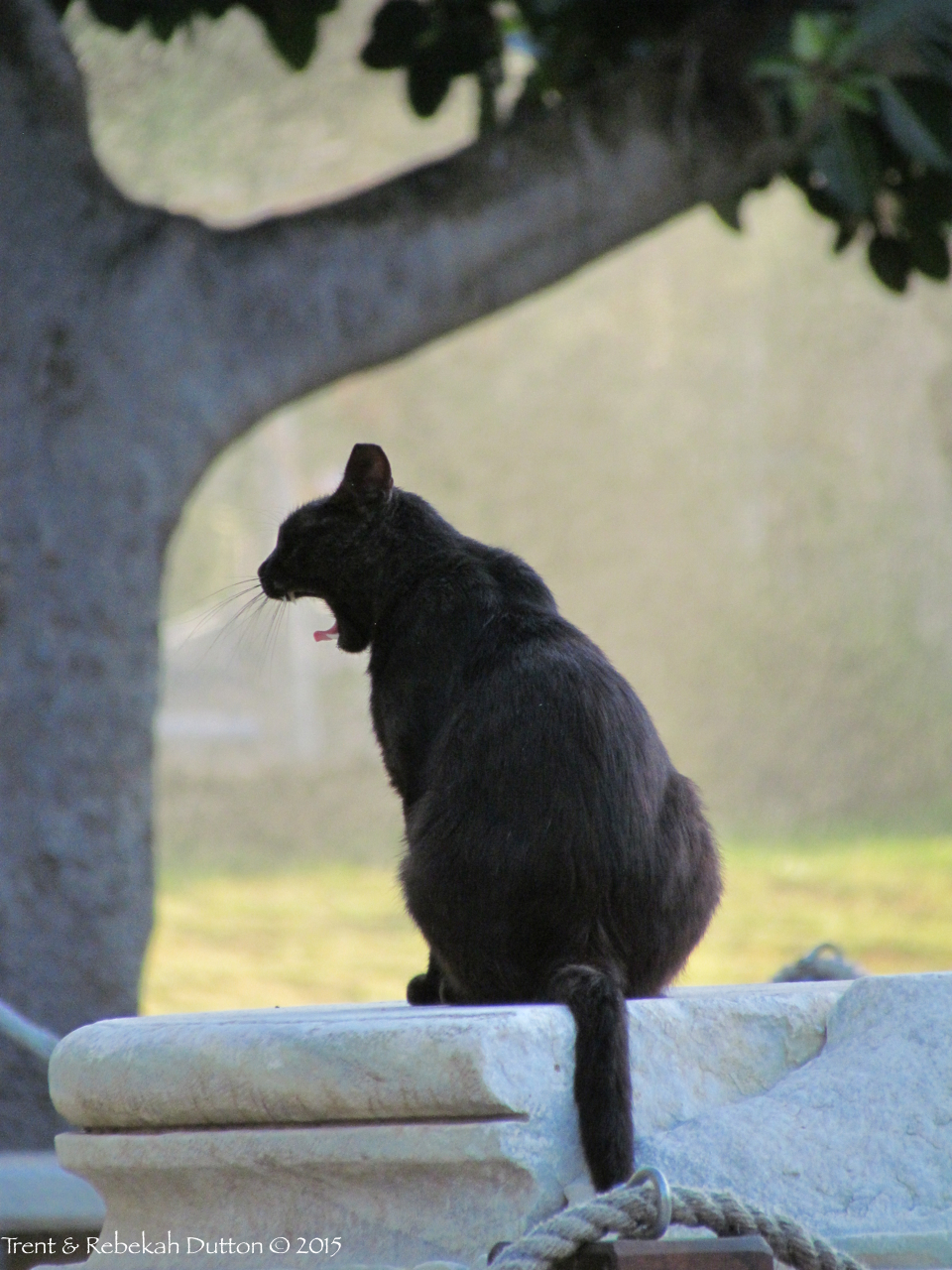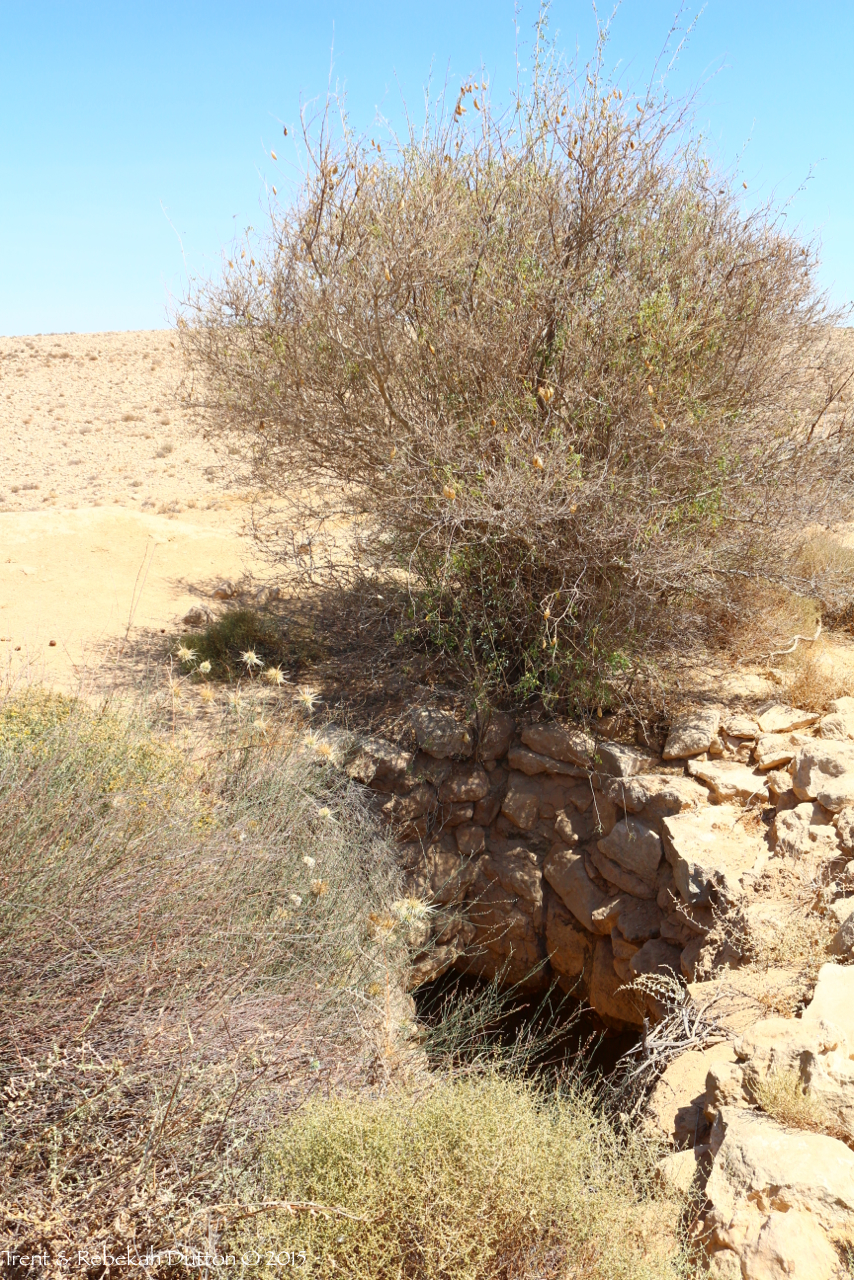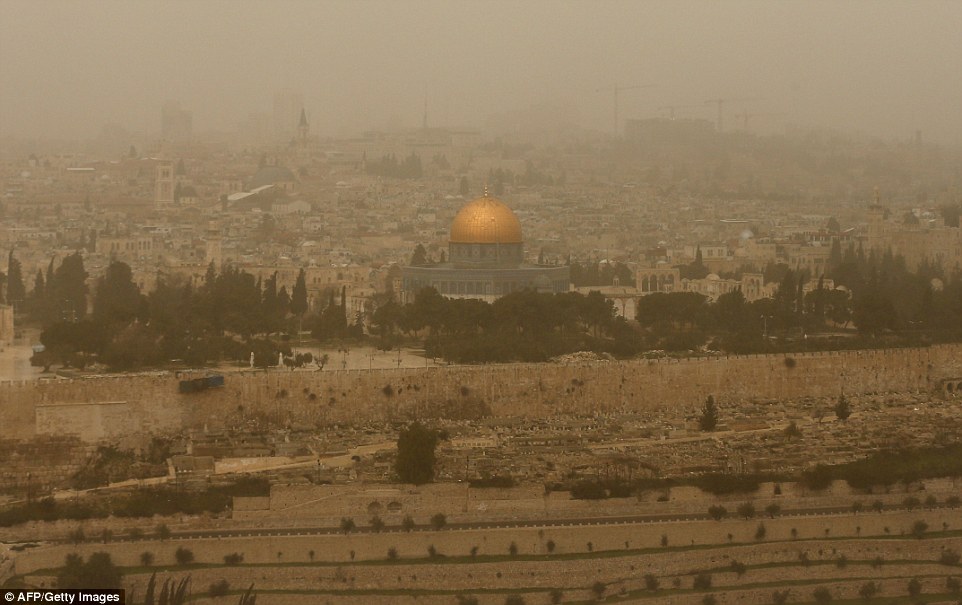 For the past couple of days, parts of the Middle East have been suffering from a sandstorm. Winds started earlier this week by blowing large amounts of sand and dust across the Mediterranean Sea toward Turkey. Since then, the winds have a more west to east component and the dust has been blown toward Egypt, Israel, West Bank and Jordan. (The picture above was taken this morning.)
For the past couple of days, parts of the Middle East have been suffering from a sandstorm. Winds started earlier this week by blowing large amounts of sand and dust across the Mediterranean Sea toward Turkey. Since then, the winds have a more west to east component and the dust has been blown toward Egypt, Israel, West Bank and Jordan. (The picture above was taken this morning.)
In Deuteronomy, the people of that time are warned that by not obeying God, things like this would happen.
But if you will not obey the voice of the Lord your God or be careful to do all his commandments and his statutes that I command you today, then all these curses shall come upon you and overtake you. Cursed shall you be in the city, and cursed shall you be in the field. Cursed shall be your basket and your kneading bowl. Cursed shall be the fruit of your womb and the fruit of your ground, the increase of your herds and the young of your flock. Cursed shall you be when you come in, and cursed shall you be when you go out. “The Lord will send on you curses, confusion, and frustration in all that you undertake to do, until you are destroyed and perish quickly on account of the evil of your deeds, because you have forsaken me. The Lord will make the pestilence stick to you until he has consumed you off the land that you are entering to take possession of it. The Lord will strike you with wasting disease and with fever, inflammation and fiery heat, and with drought and with blight and with mildew. They shall pursue you until you perish. And the heavens over your head shall be bronze, and the earth under you shall be iron. The Lord will make the rain of your land powder. From heaven dust shall come down on you until you are destroyed. - Deuteronomy 28:15-24
Photo courtesy of AFP/Getty Images.
 Acts 9 relates the account of Jesus appearing to Saul on the road to Damascus. While traveling around noon, a bright light shined down upon Saul and those that were with him. Jesus spoke to Saul and instructed him to go to Damascus where he would be told what he needed to do. From this overlook on the Israel/Syria border, the city of Damascus lies about 25 miles to our northeast. Depending on the route Saul took, it is possible that he walked very close to here.
Acts 9 relates the account of Jesus appearing to Saul on the road to Damascus. While traveling around noon, a bright light shined down upon Saul and those that were with him. Jesus spoke to Saul and instructed him to go to Damascus where he would be told what he needed to do. From this overlook on the Israel/Syria border, the city of Damascus lies about 25 miles to our northeast. Depending on the route Saul took, it is possible that he walked very close to here.



